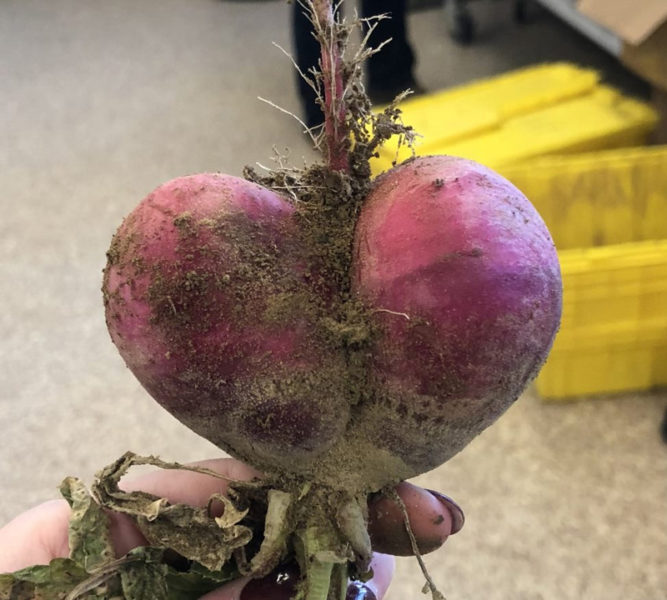
A heart-shaped beet found at the food hub in Damariscotta. (Photo courtesy Madaline Copeck)
We’ve all heard the phrase “it takes a village.” Sometimes I think it’s important to really get some perspective on what that phrase really means.
Lincoln County is made up of 19 towns and has an estimated population of about 36,000 people. According to recent census data, the poverty rate in the county is 9.1%. That’s about 3,276 people. Each and every one of those people is in a unique situation and has unique needs.
When you think about the number of people in our county that could potentially need food services, it becomes clear that it takes a lot of different community partners working together to be successful. Luckily, Lincoln County has many different people and organizations that are ready to step up to the plate.
We have food pantries, public health workers, nonprofits, farms, schools, and businesses all doing their part to try and ensure that everyone in Lincoln County has access to food. And it truly does take everyone in order to make the necessary changes. I have said many times that Lincoln County is a distinctly generous place, and that generosity does not go unnoticed.
The state of Maine is also unique due to its approach to fighting food insecurity. In 2019, Maine passed legislation committing to end hunger by 2030. Their definition of ending hunger is to have no “very low food security” and 4% “low food security.” It is certainly an ambitious plan, but one that is possible with a lot of hard work and cooperation.
For anyone unfamiliar with the Ending Hunger by 2030 roadmap, it hinges on five strategic goals: build the infrastructure and capacity necessary within and outside state government to coordinate the implementation of Maine’s Roadmap to End Hunger; ensure consistent, easy access to healthy, culturally appropriate food; promote, bolster, and ensure economic security and opportunity; change the narrative of food insecurity to focus on collective responsibility and center the voices of impacted people; and close the equity gap in household food security by addressing underlying structural inequities in all goals.
It’s clear from this plan that ending hunger in Lincoln County, and in Maine as a whole, requires systemic change in addition to support for the charitable food system. If you are interested in how Maine plans to implement these strategic goals, I highly recommend reading the whole roadmap, which can be found on maine.gov.
While I think it is possible to end hunger by 2030, it really will take a village.



